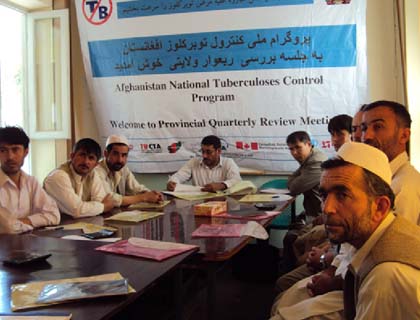KABUL - According to the World Health Organization (WHO), about 53,000 people contract tuberculosis (TB) every year in Afghanistan. The available figures indicate that 66 percent of new cases are women and 10 percent are children.
WHO has said that more than 670 children younger than 15 were diagnosed with TB last year in Afghanistan and, of those, the majority of the cases, 465, were girls.
The Afghan Ministry of Public Health has reported that nearly 10,500 people die from TB each year in the country and nearly 650 children succumbed to the disease last year.
Experts believe that poor working and living conditions, poverty, traditional beliefs, lack of awareness about the disease, security, lack of access to proper medications and health facilities for an earlier diagnosis of the disease and intervention are among the reasons for the high incidence of tuberculosis.
The internationally-recommended Directly Observed Treatment Short Course (DOTS), which is believed to be the most efficient and cost-effective tuberculosis control strategy, has been used in Afghanistan with some success.
The implementation of DOTS requires sustained political and financial commitment to ensure that there can be: diagnosis by quality ensured sputum-smear microscopy; standardized short-course anti-TB treatment (SSC) given under direct and supportive observation (DOT); a regular, uninterrupted supply of high quality anti-TB drugs; and a standardized recording and reporting mechanism.
According to available figures, the percentage of people with access to DOTS in Afghanistan has increased from 14 to 97 percent since 2002 and the number of health facilities which apply DOTS has increased from 10 in 2000 to nearly 1,200 in 2011.
Based on the DOTS successes, the WHO developed a six-point ‘Stop TB Strategy’ to address the key challenges faced by TB worldwide. The main purpose of the strategy is to lessen the global TB burden by 2015 and ensure that all TB patients and those co-infected with HIV and drug-resistant TB take advantage of universal access to high-quality diagnosis and patient-centered treatment.
The six-point ‘Stop TB Strategy’ includes sustaining, improving and accelerating quality DOTS expansion; addressing TB-HIV, multi-drug resistant TB (MDR-TB) and other special challenges; contributing to health system strengthening; engaging all care providers; empowering patients and communities; and enabling and promoting research.
Keeping in mind the current threat posed by TB in Afghanistan, experts suggest that more priority should be given to a carefully-designed national TB communication strategy based on the six-point ‘Stop TB Strategy’ in Afghanistan. The communication objective should be clear whether it wants to raise awareness about the danger of TB; promote TB safe behavior among those who are aware of the dangers of TB or promote TB safe behavior among a group of people who are at particular risk.
The comprehensive communication strategy needs to be based on the results of well designed research, using Knowledge, Attitude, Practices and Beliefs (KAPB), Focus Group Discussion (FGD) and Participatory Rural Appraisal (PRA) research methods.
Specials attention should be given to rural areas where the majority of the population live and where the level of understanding of TB is very low. An overall majority of people in Afghanistan do not know the early signs and symptoms of TB and think that it is an incurable disease.
Meanwhile, any research to be conducted in the country will need to pay special attention to women and girls who make up the majority of the TB cases in Afghanistan and are traditionally responsible, in certain parts of the country, for working in some unhygienic environments such as stables, pens, backyards, and collecting and bringing home firewood, bushes and animal droppings. They are also responsible for cooking, washing and taking care of other household chores and all these could make them more prone to the disease.
Despite TB eradication efforts, Afghanistan has remained one of the 22 TB high-burden countries in the world. The alarming figures indicate that Afghanistan has a long way to go before getting rid of this preventable disease. (KP)

